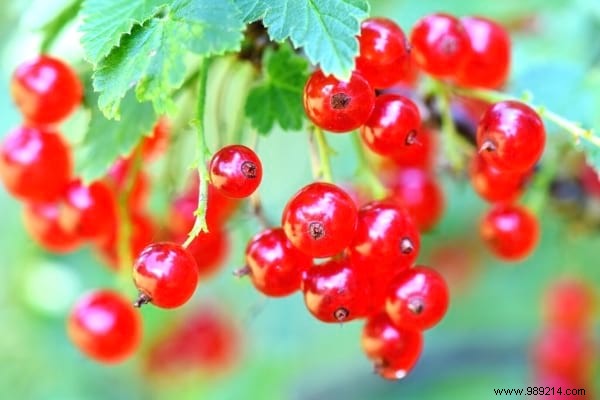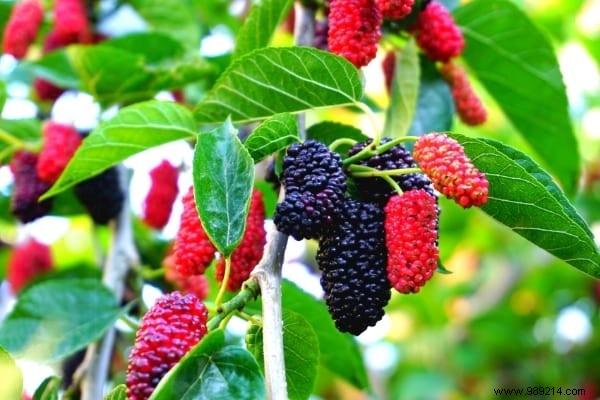
Do you need to put a hedge around your house?
So why not choose a fruit hedge that bears fruit?
Because a hedge is not just a few sad shrubs that delimit two plots.
A pretty hedge is a hedge of various colors and shapes, with different heights.
This allows for a good density. And if it also gives berries, then that's the best!
Since I planted my edible fruit hedge, I have been harvesting good fruit from May to October.
In addition, I enjoy the colorful spring bloom and fall colors.
Here are 10 examples of fruit bushes to plant as a hedge :


The hazel tree is one of the most classic shrubs for making a hedge.
It has beautiful, fairly dense green foliage.
Its little extra is obviously its fruits, which are harvested from the end of July.
As the saying goes:"at Saint Madeleine, the hazelnuts are full".
The hazel tree adapts very well to a location in full sun or in more shade and it does not fear the cold in winter.
It really is a safe bet in a functional and decorative hedge.
Do you like original varieties? Plant a crooked hazel.
With its curved branches, it looks great in a hedge, and it bears lots of fruit.

This fairly light green bush is very easy to plant at the edge of a garden or land.
It stays a moderate size, around 1.5m and regrows every year without needing to do anything.
There are pink or yellow raspberries that give an abundance of fruit from the end of May until the last fine days of autumn.
I can tell you that you will enjoy yourself!
The raspberry is the kind of indestructible plant... So indestructible that you will even have trouble getting rid of the shoots it produces each year.
To discover: How To Get More Raspberries Naturally.

Like the raspberry, the gooseberry is a shrub of about 1.5 m with fairly dense foliage.
Very resistant, it adapts to all soils and resists both summer heat and harsh winter climates.
Its flowers are magnificent in the spring, and the fruits are harvested from June to August.
In autumn, the leaves can take on pretty yellow colors.
And I'm not telling you about the savings you'll make given the price of a small punnet of raspberries!

Much like the gooseberry, the black currant is a medium shrub with lighter green foliage.
It is undemanding and withstands hot summers and harsh winters.
On the other hand, know that he hates drafts.
We all have our little quirks, huh!
From the first year, you will harvest large black and sweet fruits.

To complete your red fruit hedge, a mulberry tree is a good idea.
Fear not, most mulberry trees today are thornless and non-invasive.
They have been selected for their fruits.
You can run its branches over a wire fence or fence.
The shrub is easy to grow, withstands winter and very hot summers provided it is watered.
The very sweet and very black fruits are harvested from July until November in the warmest regions.
Today there is a variety called "mulberry" which is a hybridization between mulberries and raspberries.
To discover: 10 gardening tips to grow beautiful blackberries in your garden.

The Korean mulberry is a small tree that can reach up to 3 meters in height.
It will put some height in your hedge.
Its leaves resemble palms, light green in spring and golden in autumn.
A nice touch of color in your bocage hedge.
The fruits look like large elongated blackberries and are harvested from late May to September.
Be careful if the mulberry tree is near a terrace, the fruits stain when they fall.

The elderberry is a small tree that brings height to your hedges.
Its white flowers in spring are magnificent and offer black fruits in clusters at the end of summer.
Elderberry is known for its medicinal properties, both flowers and fruits.
An elderflower herbal tea treats urinary tract infections for example.
The leaves soothe eczema as a poultice, and the cooked fruits are eaten in jam or syrup.
Be careful, raw fruits are toxic and stain everything they touch!

A few vines from a hedge are the best effect.
Its stems can run along a fence or trellis.
And its serrated, light green leaves look beautiful in the sun.
Harvest pretty bunches of grapes at the end of summer and until the first frosts.
When you see the price of grapes, it's really a good idea to put some vines in your garden!

The goji or "fruit of happiness" is a small red fruit that is eaten fresh or dried.
You can also enjoy its purple flowers in spring.
The Lyciet (name of the tree that bears the goji) is easy to grow, because it likes everywhere and can reach up to 2m.
It bears fruit from the first year of planting provided it is well watered.
It likes full sun and especially having space around it.
The ideal is to plant it at the end of the line, so it will have a whole side without neighbors.

To give consistency to your hedges, hawthorn is recommended.
It has dense, light green foliage and pretty white or pink flowers in spring.
In the fall, you will enjoy very red fruits called cenelles.
They are cooked in jelly, syrup, jam or liqueur.
The taste is reminiscent of apple.
The flowers and leaves are also used in herbal tea.
By pruning the hawthorn, it will remain at an acceptable height.

- Leave a spacing of at least 80 cm between each fruit bush plant.
- Keep in mind that the hedge will grow. If it is adjoining a neighbour's property, leave at least 80 cm distance from the neighbour's wall. If the size of the plants is more than 2 m, leave at least 2 m distance from the neighbor's garden.
- Plant the shrubs preferably in the fall to see them bear fruit from the first summer.
- If you don't have a lot of space, opt for a hedge of dwarf fruit trees or shrubs.